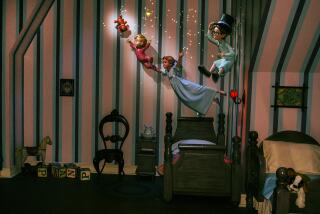Why Disneyland’s Jungle Cruise cultural changes aren’t just ‘woke’ — they’re necessary
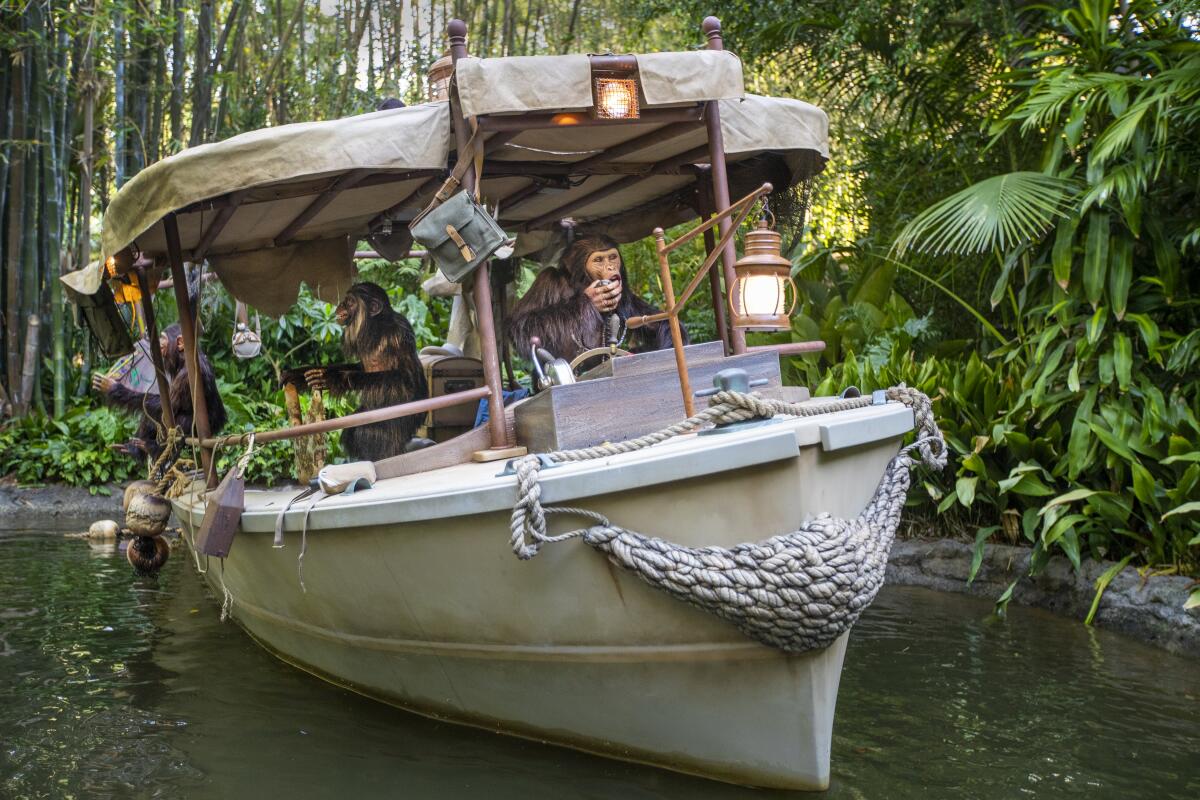
Days before Disneyland’s July 17, 1955, opening celebration, TV viewers glimpsed the park and its attractions via a special episode of the weekly “Disneyland” show on ABC. “The Pre-Opening Report From Disneyland,” a fascinating historical record that today lives on the company’s Disney+ streaming service, included a look at the mechanical hippos and crocodiles of the park’s Jungle Cruise ride, as well as the plaster molding of a Black male model, whose “imposing physique” was used “to people our Jungle Cruise with lifelike natives” as white men in formal attire looked on.
Today we cringe at this scene for a ride that went on to develop a reputation for racist depictions of Indigenous people as tourist attractions, attackers or cannibals — tribal caricatures crafted through a colonialist lens.
It’s a distinction Disney could no longer afford. Ahead of the July 30 release of a “Jungle Cruise” movie starring Dwayne Johnson and Emily Blunt, the ride reopened Friday — a day shy of the park’s 66th anniversary — with updates that remove, in Disney’s words, “negative depictions of native people.” In their place are slapstick-inspired scenes largely involving chimpanzees and monkeys getting the best of a prior Jungle Cruise expedition.
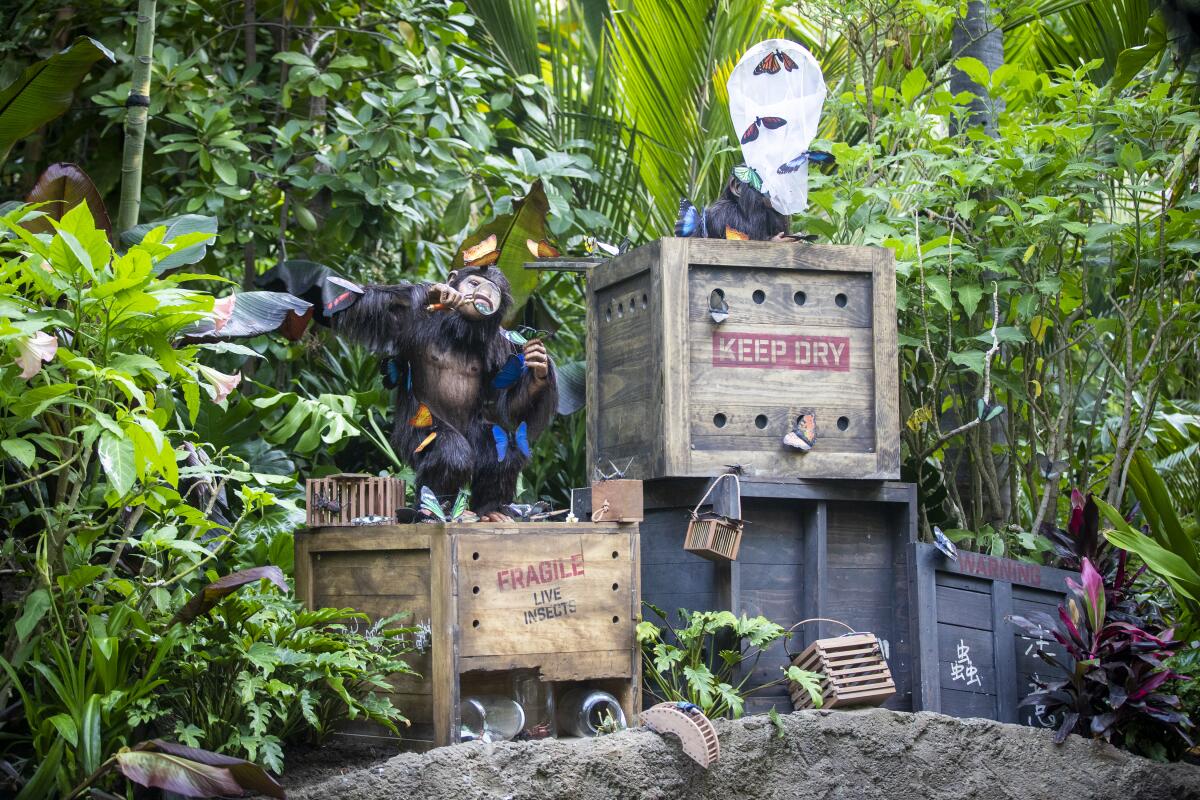
If we can agree that Disneyland is, unlike a film or a television series, a living environment — a place born of one era but striving to be welcoming to subsequent generations — then the Jungle Cruise ride may be key to understanding theme parks as works of developing art. No other attraction that has stood as long has been under the sort of evolutions that directly speak to the park’s past, its present and future.
Or its cultural missteps. The tension modern Disney reckons with is a desire to create a clean, wholesome and inviting Americana while not sanitizing our world to the point of creating false, good-ol’-days nostalgia. Or erasing someone’s own.
“We’re sitting at 66-plus years of history, right? That’s really humbling,” says Jeanette Lomboy, the vice president who oversees the Disneyland Resort and Aulani, a resort in Hawaii, for Imagineering, the company’s arm devoted to theme park experiences.
Sit back and enjoy the ride? No more. From Disney’s new Star Wars: Rise of the Resistance to Japan’s upcoming “living video game” Super Nintendo World, theme-park audiences must participate to get the full experience.
“Disneyland, in particular, is one of those places that belongs to everybody,” Lomboy says. “It’s in their memories. You can’t move a bench without touching someone’s memory. Maybe that bench was where a kid took their first steps or where someone proposed.”
Disneyland has been hustling to do more than just move benches.
The long-overdue course correction for the Jungle Cruise shifts the show to nature, the elements and the peril that awaits man when he tries to tame it — with puns aplenty. Gone are racist scenes of a spear-waving war party or a tribesman who will trade “two of his heads for one of yours.”
These changes are part of a broader attempt by Disney and Imagineering to ensure Disneyland remains a vital part of the cultural conversation rather than a cultural artifact.
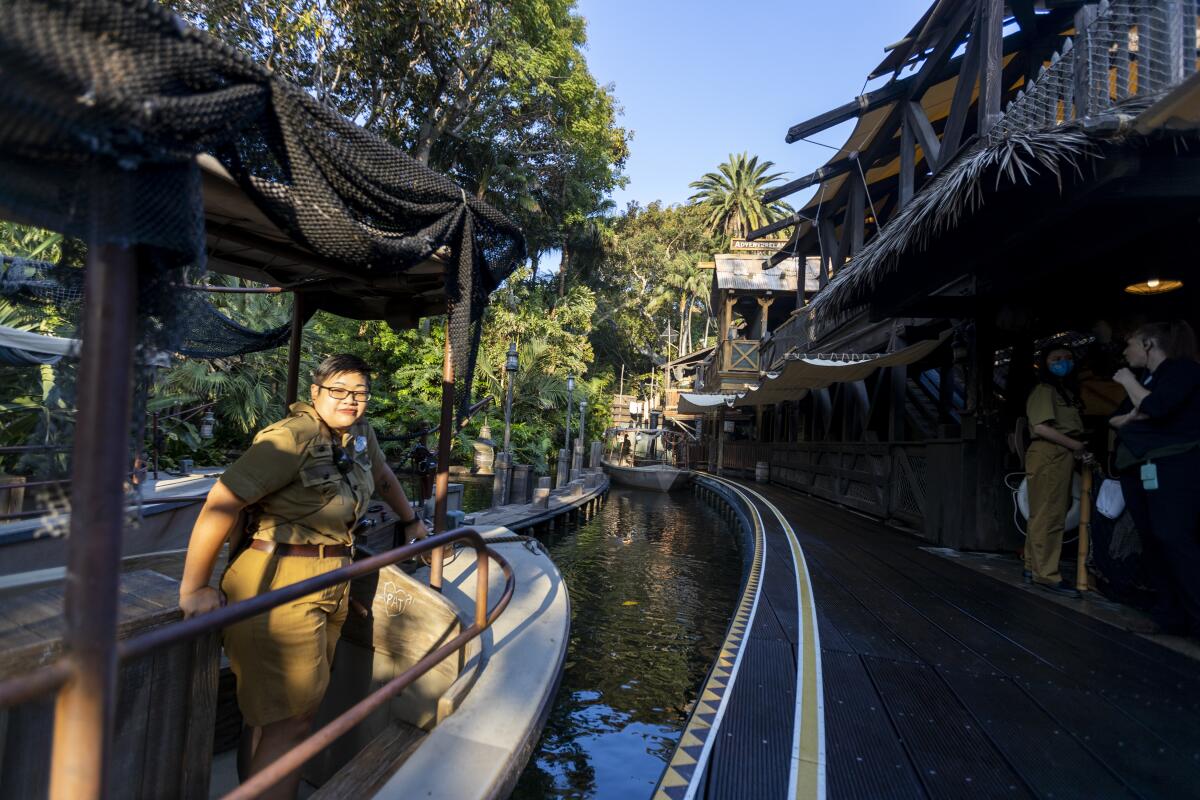
As the park edges toward 70, it must take measures to reflect the diversity and the values of its younger audience to maintain pop-culture relevancy. Simply adding superheroes and lightsabers isn’t enough.
In 2017, Disneyland at last gave women agency in its Pirates of the Caribbean attraction by removing a bridal auction scene and reimagining a female “wench” as a pirate. Amid the protests and cultural reckoning of 2020 that followed the murder of George Floyd, Disney announced it would strike “Song of the South” references from its Splash Mountain ride and instead feature “The Princess and the Frog,” starring the company’s first Black princess, Tiana.
Disney stresses that inclusive updates to the Jungle Cruise and Splash Mountain were in the works before the events of 2020. But the timing, at least concerning Disney’s decision to go public with its plans, wasn’t a coincidence.
“We are very mindful of the events that are happening around the world that impact people,” says Carmen Smith, the executive who heads inclusion strategies for Imagineering. “The murder of George Floyd — the world responded to that in unique ways. From neighborhoods to communities to cities, states, governments and the corporate world, there was an international response. How can we be part of the healing journey of America? How can we be at our best?
“We want to make sure that everyone who comes to our parks is seen,” Smith says, “and that they’re heard.”
That goes for Disney employees as well. Earlier this year, Disney announced that its staff — cast members, in park parlance — would have more freedom in how they appear for work, including the ability to choose gender-inclusive costumes and hairstyles. They also no longer have to hide their body art. Such moves received some pushback from the cultural right, arguing that Disney is getting “woke.” Yet Disney’s theme parks are simply awakening to their cultural reach.
Disneyland Imagineers anticipated criticism of the inclusion of ‘true love’s kiss’ in its Snow White ride redo. How they worked to empower Snow White.
Slow to change
It wasn’t always so. Disneyland has long been a bastion of American comfort and even American conservatism, a place that by the company’s own admittance has been slow to change. In 1987, the park hosted an AIDS Project Los Angeles fundraiser as a mea culpa for once banning same-sex dancing. The pre-social media era of Disneyland’s 1997 decision to alter the chase scenes in Pirates of the Caribbean by giving women platters of food generated a national hullabaloo over what Chicago newspaper columnist Mike Royko described as an exhibit that showcased pirates with, “let us not mince words, sexual assault on their minds.”
Lomboy recalls that when she started with Disney as a young ride operator in 1995, it was the first year Disney allowed women to front a Jungle Cruise boat. “Women weren’t allowed to be Jungle Cruise skippers,” she says. “To be honest, that I couldn’t be a Jungle Cruise skipper wasn’t something I realized when I was little. That, to me, was a shock. ... Women weren’t even allowed to work on the Jungle Cruise. But that to me is progressive change, and you move along.”
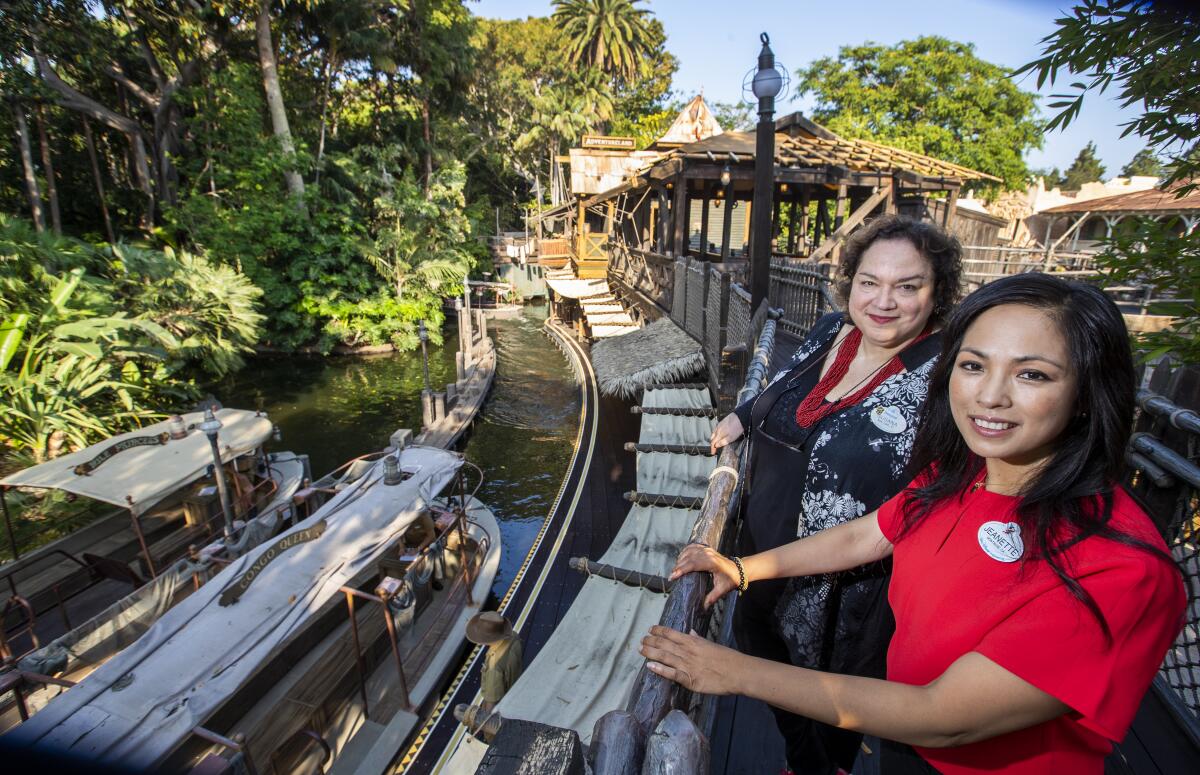
Disney’s more modern approach might be traced to the creation of parks and resorts outside Anaheim — namely the opening in 1998 of Animal Kingdom at Walt Disney World in Florida, the 2011 launch of Aulani and the arrival in 2016 of Shanghai Disneyland. All in varying ways respond to the world outside their gates in more overt ways than the traditional “castle parks,” a recognition that pure American fantasy and idealization, while not necessarily unimportant, can clash with our increasingly global and chaotic world.
Animal Kingdom and Aulani, in particular, pivot from romanticized pastiches — say, New Orleans Square — to more honestly reflect the art, history and heritage of the places they represent or are situated in. Aulani, turning 10 this year, is as notable for its dedication to local culture as it is to its high-priced hotel rooms. “Typically, when we’re in our castle parks, it’s what is the most magical, fantastical, amazing, wonderful thing we can tell,” says Lomboy, noting that the mission statement for Aulani was “telling the story of a place” rather than a Disney fairy tale.
That approach has gradually influenced other Disney parks. Disney California Adventure has since 2013 doubled down on live entertainment framed through a broad cultural lens. Change began with a mini street parade called ¡Viva Navidad!, which started with the expected Donald Duck-centered Three Caballeros but added mariachi and samba musicians, folklórico and carnaval dancers, and 12-foot-tall mojiganga puppets.
The event was the brainchild of Susana Tubert’s live entertainment team, and its success has led to the creation of Lunar New Year celebrations, a broader cultural representation of Christmas performances, and a “Lion King” storytelling show that heightened the African influences of the animated feature with newly arranged music, ancestral costumes and more than a dozen performers and dancers. This summer, at the new Avengers Campus, a short “Black Panther”-inspired show also plays up the real African influences of the fictional Marvel-created world of Wakanda.
“I think ¡Viva Navidad! is what kind of cracked the code,” Tubert, also part of the Jungle Cruise team, says of the Three Caballeros show. “The fact that we could take these characters who are so Disney and surround them with authentic performers from cultural backgrounds, that was a big moment for all of us in entertainment.”
Of course, it’s far more impactful when Disney characters don’t have to be surrounded by cultural signposts. With the parks largely limited to intellectual property that the Walt Disney Co. owns or creates, the company’s increasingly diverse movies and TV shows have made it easier to more naturally add cultural representation. “Coco,” for instance, inspired a Día de los Muertos event in Anaheim, which includes a memory wall for guests to write letters to lost loved ones.
“We wouldn’t have the ability to celebrate Día de los Muertos if Pixar hadn’t created ‘Coco’ for us,” Tubert says. “So in some ways what’s happening, especially at Disney California Adventure Park, is we have been given this library — ‘Black Panther’ — that are deliberately and intentionally bringing to life different narratives.”
Theme parks resonate because they are products of their time. The redesigned Jungle Cruise, which now features a colorful scene in which monkeys wrestle over a Christmas sweater and spin on a Victrola, is now as much a reflection of 2021 as it is 1955. Early Disneyland designer Harper Goff was influenced by Disney’s own nature documentaries and the 1951 film “The African Queen,” which is also a clear influence on “The Jungle Cruise” movie, down to the Humphrey Bogart-style scarf and hat worn by Johnson.
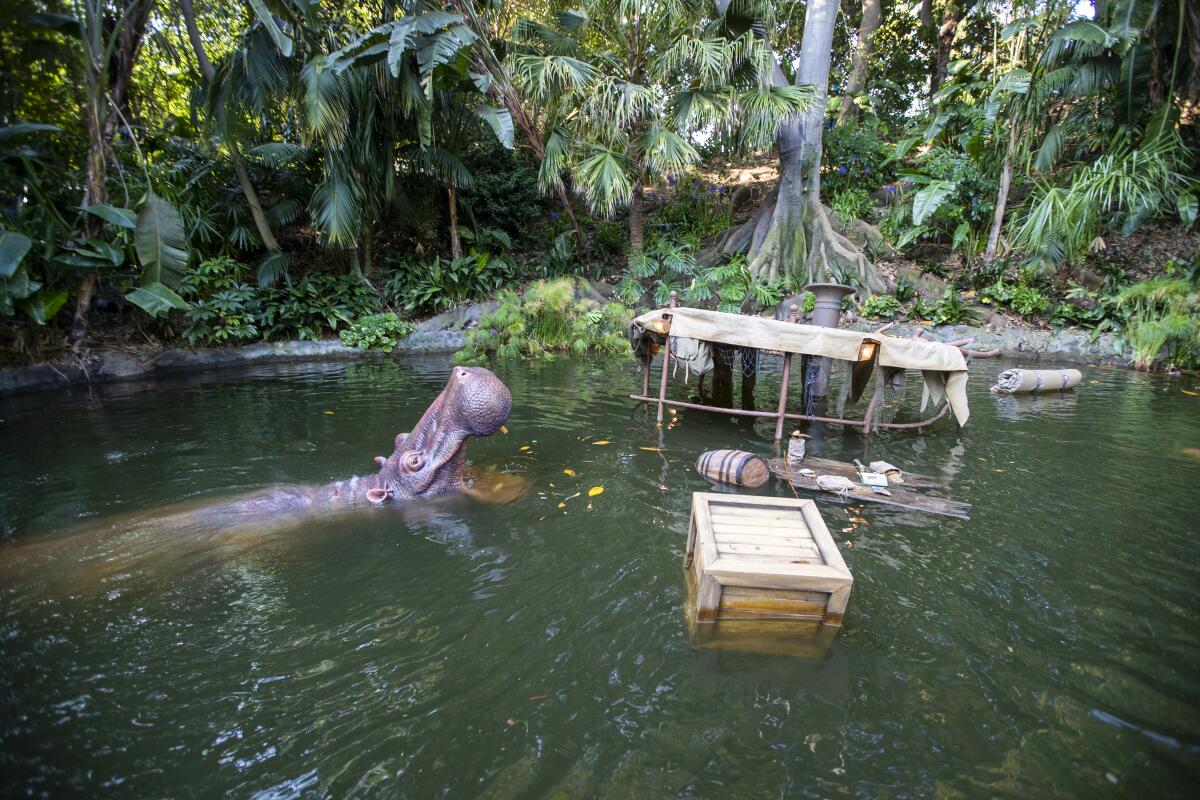
Front of mind today for the Imagineers behind the ride’s redesign is the havoc humans wreak on the environment. And while the Jungle Cruise is comedy and fantasy — check out the colorful new snake shrine as well as an elephant sculpture that replaces one formerly steeped in religious iconography — it’s also a hopeful spin on the belief that nature will ultimately triumph, one way or another.
“We found a way to get more comedy built into the ride,” Tubert says. “We got to put skippers into unexpected, unprecedented situations, and at the end of the ride the discovery we made was that the animals had the last laugh — not the humans.”
And humans on the reimagined Jungle Cruise are generally making a mess (see the trash floating in the river, or a “lost & found” gift shop full of man-made junk). In the beloved but problematic “trapped safari” scene, in which adventurers scurry up a tree to avoid the horn of a rhinoceros, a white traveler was once at the top while native safari guides were in a more perilous position. Now, tourists — heavily detailed figures each with their own backstory and representing a multitude of nationalities — are simply in over their head instead of in danger of losing theirs.
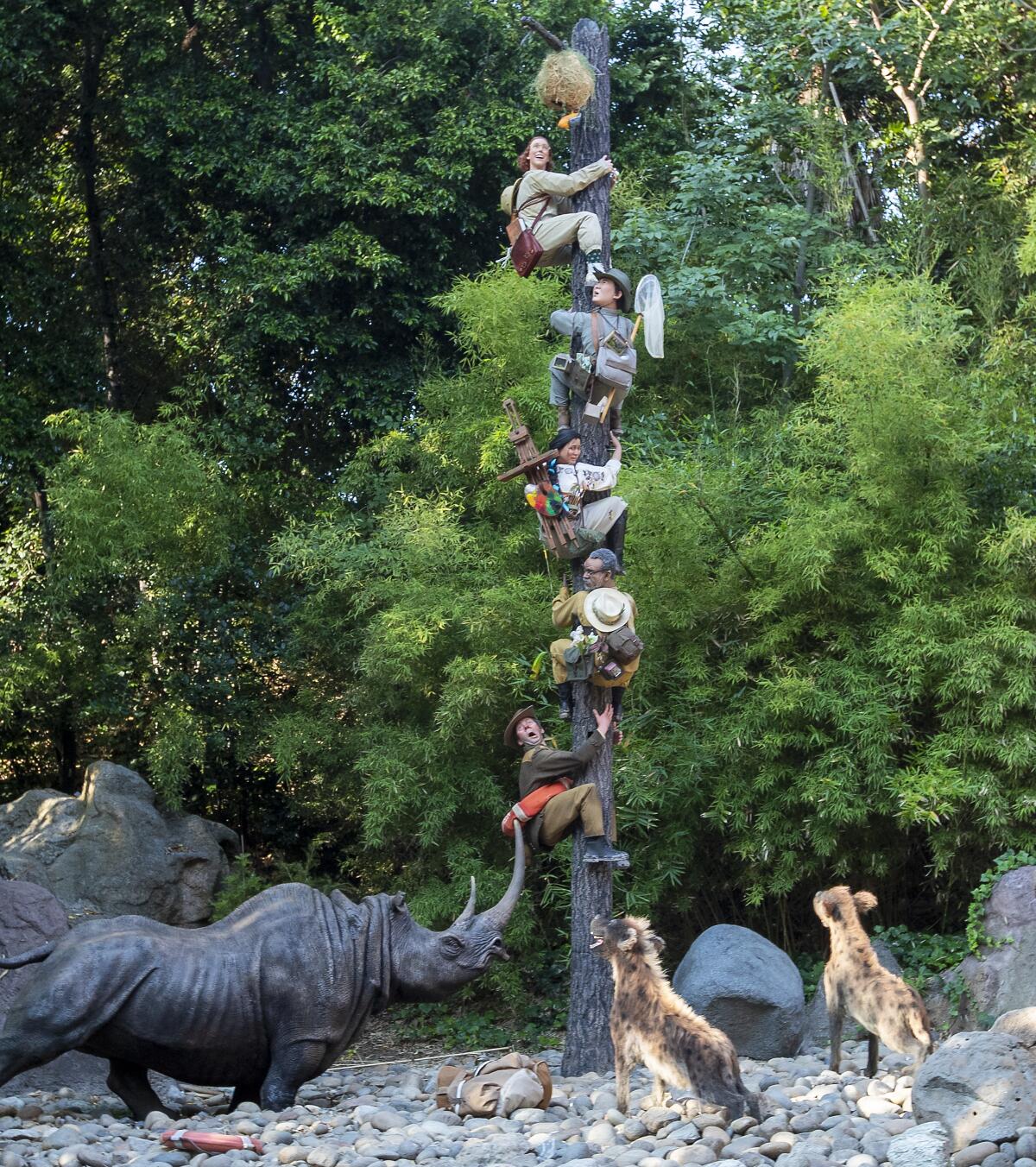
“My belief is that no one intentionally creates something that is going to make someone feel uncomfortable,” says Smith. “A lot of it may have to do with not having the information about the history of a particular experience.
“So,” she continues, “when we look at something and realize the content is inappropriate, and may perpetuate a misconception or a stereotype, our intention is to take a look at it critically, and figure out a way to enhance it, to make the necessary changes so it is relevant.”
And relevancy will always take precedence over nostalgia. “It’s about arming people with knowledge,” Smith says. “It’s about recognizing the attachment that people have, and understanding the intention was never to make anyone feel uncomfortable. But when we recognize that, we must address it.”
Complex priorities
Which, of course, raises a question: How does Disney decide what to prioritize?
Next up for Smith is the high-profile revamp of Splash Mountain, which will bring a “Princess and the Frog” attraction to Disneyland and Walt Disney World. But over the years many of Disney’s heritage rides have come under the spotlight. Peter Pan’s Flight, for instance, was updated for Disneyland’s 60th anniversary, yet the attraction kept its Native American caricatures.
Also questionable are the exaggerated accents in the bird’s voices inside the Enchanted Tiki Room. And even the Haunted Mansion has received calls for removal of a hanging scene, noting the association with suicide and lynchings.
“Complex, no doubt,” says Smith.
“There are a lot of people involved in terms of how we prioritize what we tackle first,” she says. “We spend a lot of quality time with our park presidents, with our regional leaders and with our [Imagineering] leadership on the ground, and we look at what’s on our menu and what may have a heightened concern. There are many factors that come and go into how we prioritize, and I wish I could be more specific. At the moment, I can’t even say how many projects I am on.”
She also can’t say too much about the “Princess and the Frog” ride, for which Disney has yet to publicly reveal a timeline. Splash Mountain remains open on both coasts.
“The ride system that people love stays intact,” Smith says, “but the journey is going to take them through a sense of wonder. We had a team of people — consultants — to help us to understand New Orleans, looking at both the fantastical and real, and we had an incredible opportunity to take virtual tours of New Orleans. One of our Imagineers lives there so we spent a good five hours walking the streets of New Orleans looking at buildings, textiles and colors. We did a lot of homework. It’s a celebration of Tiana.”
It’s also an understanding that the preservation of the parks, while serving as a history of American popular art, rests on change. Physical environments such as Disneyland are indeed museums of a sort. Throughout Disneyland are references to our history and the past 66 years, be it the globalism of the ’60s that led to It’s a Small World or the knowledge that even pirates can learn the meaning of consent.
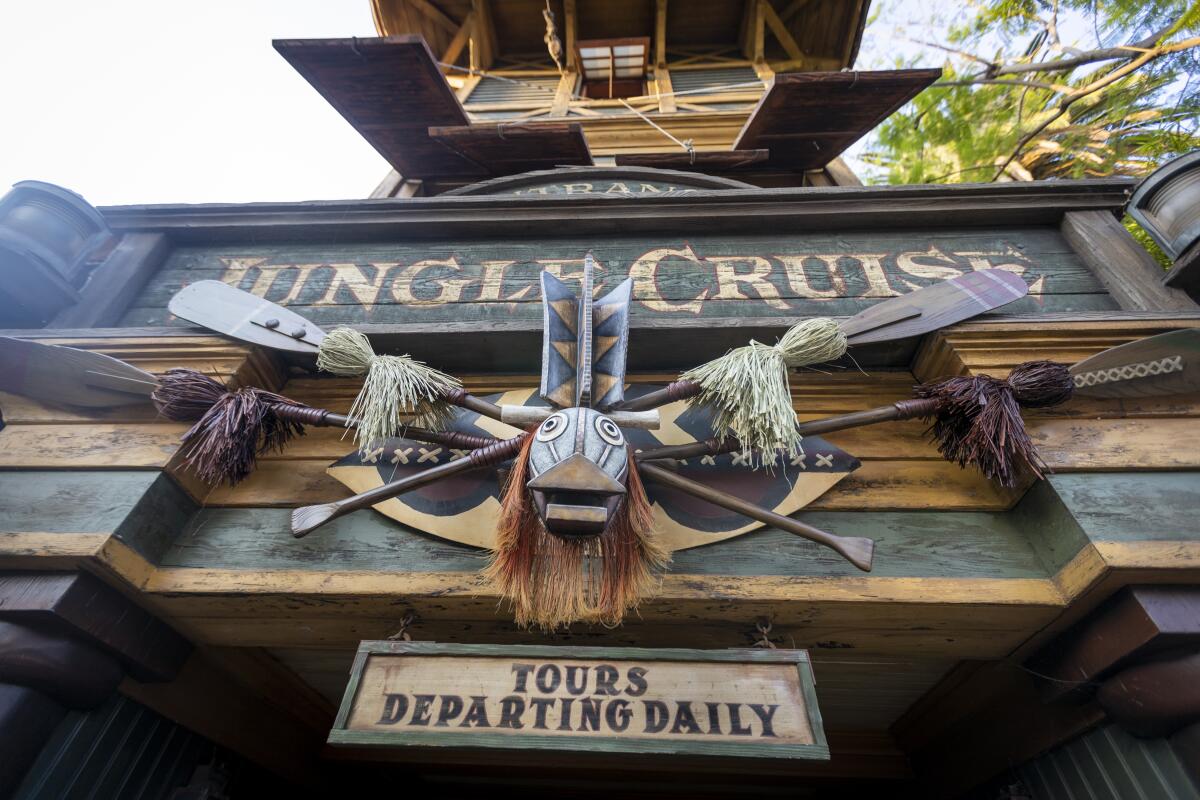
But as much as Disney’s Imagineers talk about the importance of respecting and honoring people’s memories, the spaces will survive only if future generations can see themselves and their beliefs reflected. While Disneyland and the theme parks it spawned were once images of Southern California leisure culture and Hollywood, for Disneyland to last another 66 years it has to connect with the same diverse and fragmented audiences of today’s films, television and games.
Asked about the importance of theme parks, Lomboy recalls one of her first projects at Walt Disney World’s Epcot, for which she hung around the park trying to get a sense of guest opinions.
“I remember walking into the space and seeing three generations of females — a grandmother and a mother and a daughter,” says Lomboy. “I could not understand what they were saying because we didn’t speak the same language. But they were smiling and laughing and having a great time.
“It hit me,” she continues. “I don’t have to speak the same language. I don’t have to be from the same country. We don’t have to be the same age. What we do transcends religion, gender, age — everything.”
More to Read
The biggest entertainment stories
Get our big stories about Hollywood, film, television, music, arts, culture and more right in your inbox as soon as they publish.
You may occasionally receive promotional content from the Los Angeles Times.



